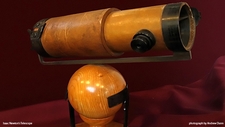History of Science

TEKS Objective
The student is expected to connect grade-level appropriate science concepts with the history of science, science careers, and contributions of scientists.
Essential Understanding
The student uses critical thinking and scientific problem solving to make informed decisions.
Science Background
History of the Philosophy of Science: Explorable.com (website) - Historical summary of the evolution of scientific thinking and endeavor over the course human civilization, from ancient philosophy to the modern process of doing science.
Signature Lesson
Inventors of the Industrial Revolution: TeachersFirst (website) - Interactive website that connects science concepts with history and the process of scientific discovery by leading students through key events of the industrial revolution, its major inventions, and some of the scientists behind them.
Inventors of the Industrial Revolution
TeachersFirst, www.teachersfirst.com
- Supporting Lessons
- Extensions
- Assessment Ideas
- Literature Connections
- Related
TEKS - Additional Resources
Supporting Lessons
History of Astronomy Scavenger Hunt: Learn NC (website) - Introduction to the history and basics of astronomy, including information about several models of the universe developed by scientists over time.
History of Astronomy Scavenger Hunt
Learn NC, www.learnnc.org
Women Scientists: National First Ladies’ Library (website) - Students study the work of famous women scientists, learn that women have made many critical contributions to scientific research, and write essays describing how the world would be different without these women’s research and discoveries.
Women Scientists
National First Ladies’ Library, www.firstladies.org
Elaboration Lessons and Extensions
Diseases Throughout Human History: Learn NC (website) - Students trace the historical impact of disease on humankind and research key events in the history of disease.
Assessment Ideas
- Have students create an advertisement for one of the inventions referenced in the Signature Lesson.
- Each student should select a disease to study, and then write an essay that includes: a) when the disease first appeared; b) how many people died from the disease; c) how was the disease transmitted; d) how and when a vaccine was invented.
Literature Connections
Arquimedes and the Door of Science. Bendick, Jeanne (ISBN-13: 978-1883937126)
The Not-Quite World Famous Scientist. Hughes, Susan (ISBN-13: 978-1550416961)
Book of Black Heroes: Scientists, Healers, and Inventors. Hudson, Wade (ISBN-13: 978-0940975972)
Ext Women Scientists. Stille, Darlene (ISBN-13: 978-0516405858)
Additional Resources
History of Physics: MIT (website) - Collection of links to different fields of physical science, famous physicists and experiments, and more.
History of Physics
MIT, web.mit.edu
History of Chemistry: Le Moyne College (website) - Well-organized links to papers on the history of different sciences, websites devoted to individual scientists, science museums, and more.
TEKS Navigation
Grade 5
Need Assistance?
If you need help or have a question please use the links below to help resolve your problem.

Comments